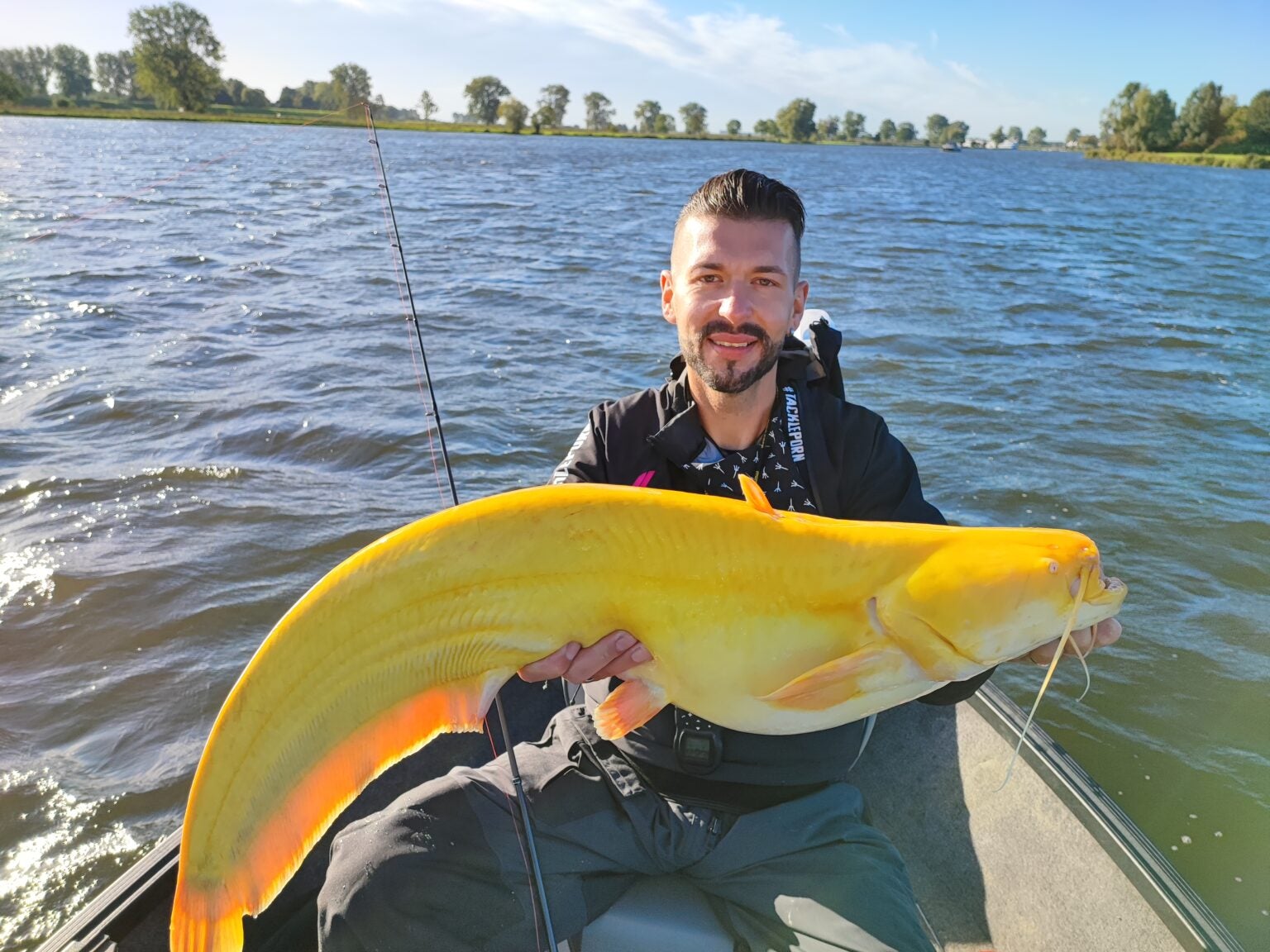Extremely rare, bright-yellow catfish caught in the Netherlands
The banana-colored animal likely has a rare genetic disorder called leucism.

Like an enormous, writhing banana with gills, a bright-yellow catfish flopped out of the water and into Martin Glatz's boat. Glatz, a professional angler out on a lake in the Netherlands with his twin brother Oliver, had caught many catfish in his life — but none like this. Glatz panicked at first.
"I have never seen such a catfish before," Glatz told Live Science in a direct message. "I am still overwhelmed by it."
The whopper is a wels catfish (Silurus glanis), a large species that's native to lakes and rivers throughout Europe, according to Field & Stream. These fish are known for their enormous size; they can grow to at least 9 feet (2.7 meters) long and weigh nearly 300 pounds (130 kilograms), according to the National Oceanic and Atmospheric Administration (NOAA).
But rarely do they look as banana-hued as the fish Glatz caught; most wels catfish have dark greenish-black bodies, with a handful of mottled yellow spots, NOAA said.
The lemon-zested catfish likely has leucism, a rare genetic disorder that causes a reduction of pigmentation in skin and hair. (Unlike albinism, a similar genetic disorder, leucism does not affect the animal's eyes, Live Science previously reported.)
Leucism has been observed in mammals, reptiles, birds and fish, resulting in striking sightings such as yellow penguins and white killer whales. In 2017, a leucistic yellow catfish was spotted in the Mississippi River in Iowa, making headlines in the local newspaper Herald & Review.
While strange and beautiful to human eyes, leucistic animals typically face a disadvantage in the wild. With their light, sometimes bright bodies, leucistic animals stick out more to predators and may make easier targets than their fully pigmented cousins, Live Science previously reported.
Sign up for the Live Science daily newsletter now
Get the world’s most fascinating discoveries delivered straight to your inbox.
This honkin' wels catfish seems to have escaped an early demise — and may live to grow even more massive. After taking a few photos, Glatz released the fish back into the water in hopes that it would grow "very big," perhaps giving another angler an even bigger surprise on future fishing trips.
Originally published on Live Science.

Brandon is the space/physics editor at Live Science. His writing has appeared in The Washington Post, Reader's Digest, CBS.com, the Richard Dawkins Foundation website and other outlets. He holds a bachelor's degree in creative writing from the University of Arizona, with minors in journalism and media arts. He enjoys writing most about space, geoscience and the mysteries of the universe.









